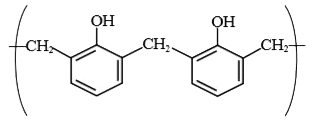Given below are two statements : One is labelled as Assertion A and other is labelled as Reason R.
Assertion A : The dihedral angles in H2O2 in gaseous phase is 90.2∘ and in solid phase is 111.5∘.
Reason R : The change in dihedral angle in solid and gaseous phase is due to the difference in the intermolecular forces.
Choose the most appropriate answer from the options given below for A and R.
A is correct but R is not correct.
Both A and R are correct but R is not the correct explanation of A.
Both A and R are correct and R is the correct explanation of A.
A is not correct but R is correct
To solve the question, we need to analyze the two statements provided: Assertion A and Reason R.
1. Understanding Assertion A:
- Assertion A states that the dihedral angle in H₂O₂ (hydrogen peroxide) in the gaseous phase is 90.2° and in the solid phase is 111.5°.
- We need to verify if these values are correct. The dihedral angle refers to the angle between two planes formed by four atoms.
2. Analyzing the Dihedral Angles:
- In the gaseous phase, the dihedral angle of H₂O₂ is actually around 115.5°, not 90.2°.
- In the solid phase, the dihedral angle is approximately 90.2°, not 111.5°.
- Therefore, the values given in Assertion A are incorrect.
3. Understanding Reason R:
- Reason R states that the change in dihedral angle between the solid and gaseous phases is due to differences in intermolecular forces.
- In the solid phase, molecules are closely packed, leading to stronger intermolecular forces compared to the gaseous phase where molecules are more dispersed and have weaker interactions.
- While it is true that intermolecular forces affect molecular geometry, the specific angles mentioned in Assertion A are incorrect.
4. Conclusion:
- Since Assertion A is false (the dihedral angles provided are incorrect), and Reason R is also not valid in the context of the assertion's correctness, we conclude that both statements are false.
Final Answer:
Both Assertion A and Reason R are false.
- Assertion A states that the dihedral angle in H₂O₂ (hydrogen peroxide) in the gaseous phase is 90.2° and in the solid phase is 111.5°.
- We need to verify if these values are correct. The dihedral angle refers to the angle between two planes formed by four atoms.
- In the gaseous phase, the dihedral angle of H₂O₂ is actually around 115.5°, not 90.2°.
- In the solid phase, the dihedral angle is approximately 90.2°, not 111.5°.
- Therefore, the values given in Assertion A are incorrect.
- Reason R states that the change in dihedral angle between the solid and gaseous phases is due to differences in intermolecular forces.
- In the solid phase, molecules are closely packed, leading to stronger intermolecular forces compared to the gaseous phase where molecules are more dispersed and have weaker interactions.
- While it is true that intermolecular forces affect molecular geometry, the specific angles mentioned in Assertion A are incorrect.
- Since Assertion A is false (the dihedral angles provided are incorrect), and Reason R is also not valid in the context of the assertion's correctness, we conclude that both statements are false.
Both Assertion A and Reason R are false.
टॉपर्स ने हल किए ये सवाल
- JEE MAINS 2021BOOK - JEE MAINS PREVIOUS YEARCHAPTER - JEE MAINS 2021EXERCISE - CHEMISTRY (SECTION-B)
10 Videos
- JEE MAINS 2021BOOK - JEE MAINS PREVIOUS YEARCHAPTER - JEE MAINS 2021EXERCISE - CHEMISRY (SECTION-A)
21 Videos
- JEE MAINS 2020BOOK - JEE MAINS PREVIOUS YEARCHAPTER - JEE MAINS 2020EXERCISE - CHEMSITRY
25 Videos
- JEE MAINS 2022BOOK - JEE MAINS PREVIOUS YEARCHAPTER - JEE MAINS 2022EXERCISE - CHEMISTRY (SECTION-B)
10 Videos
समान प्रश्न
The number of lone pairs of electrons on the central I atom inI−3 is __________ .
View Solution
is a repeating unit for :
View SolutionThe correct statement with respect to dinitrogen is :
View SolutionHow many g atoms and number of atoms are there in (a) 60g carbon, (b) 22.4gCu, and (c ) 72.52g lead. Given atomic masses of C,Cu and Pb are 12,63.6, and 207.2, respectively. (Avogadro's number =6.02×1023).
View SolutionAssertion. At the critical temperature, the densities of the gaseous and liquid phase become equal. Reason. At the critical point, surface of separation between the liquid phase and the gaseous phase disappears.
View SolutionWhat is the dihedral angle of H_2O_2 in gas and solid phase ?
View SolutionThe dihedral angle of H_(2)O_(2) in solid phase is
View SolutionA : Dihedral angle of H_2O_2 in gas phase is greater than in solid phase. R : H_2O_2 has planar structure.
View SolutionAssertion : At critical temperature, the densities of the gaseous and liquid phase become equal.
Reason : At critical point, surface of separation between the lqiuid phase and the gaseous phase disappears.
View SolutionHydrogen peroxide has a non-planar structure. In gas phase of H_(2)O_(2) , dihedral angle is v^(@) and in solid phase at 110 K, its dihedral angle is y^(@) . What are x and y ?
View Solutionअभिकथनः गैसीय प्रावस्था में, H2O व H2O2 दोनों ही घूर्णित संरचनाओं वाले होते हैं।
तर्क: H2O व H2O2 दोनों ही का बंध कोण 104.5∘ होता है।
View SolutionThe dihedral angle of H2O2 in solid phase is
View SolutionA : Dihedral angle of H2O2 in gas phase is greater than in solid phase.
R : H2O2 has planar structure.
View SolutionHydrogen peroxide has a non-planar structure. In gas phase of H_(2)O_(2) , dihedral angle is x^(@) and in solid phase at 110 K, its dihedral angle is y^(@) . What are x and y ?
View SolutionStatement I: In gas phase, the angle of H_2O_2 is 90.2^@ and in solid phase it is 112^@ Statement II: It is due to intermolecular forces
View Solution

